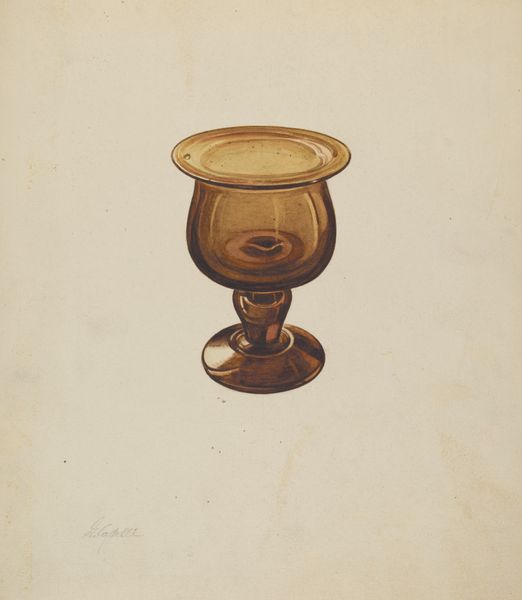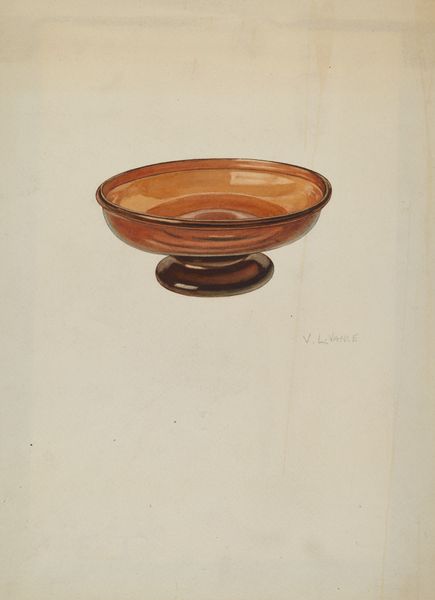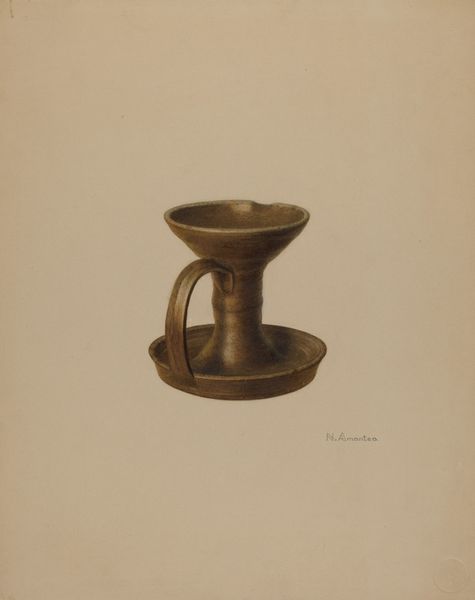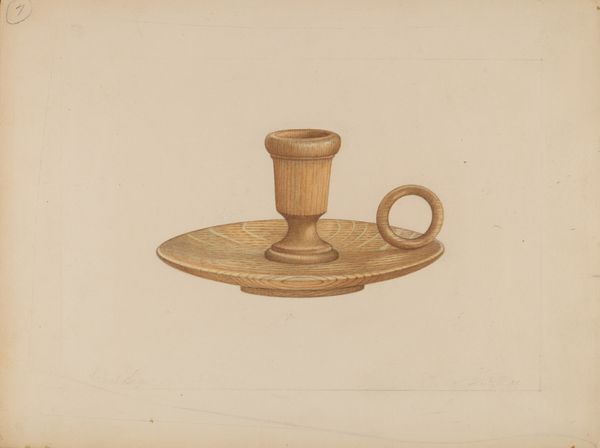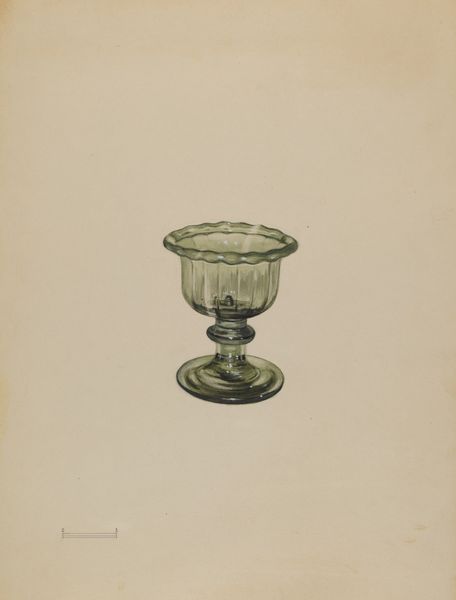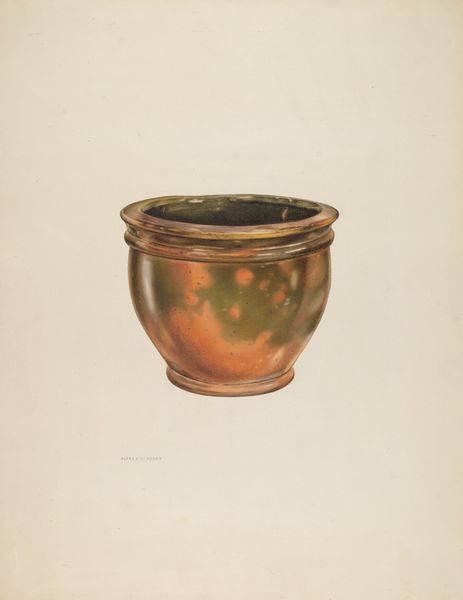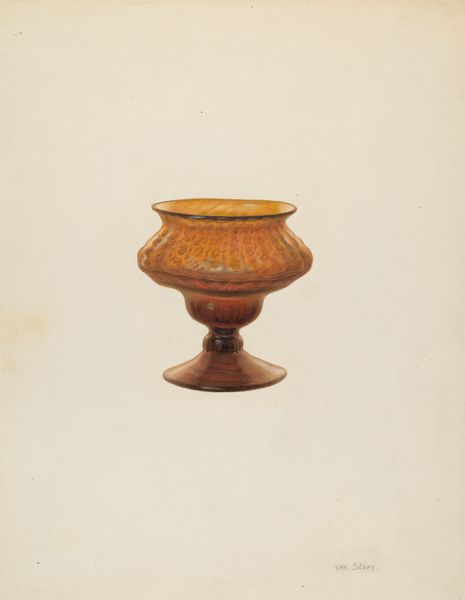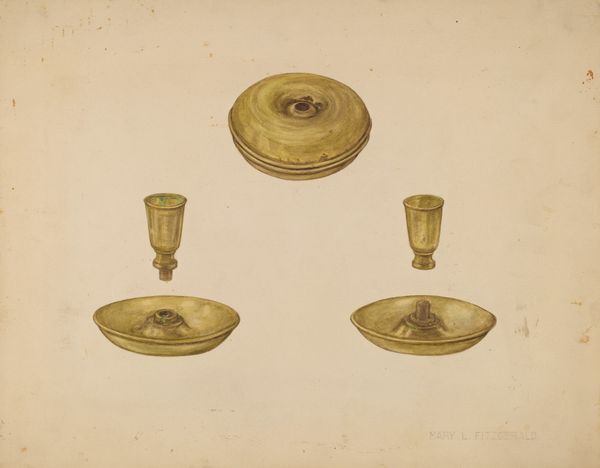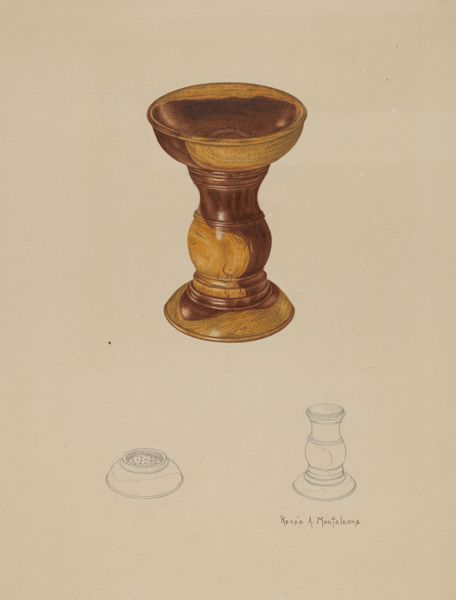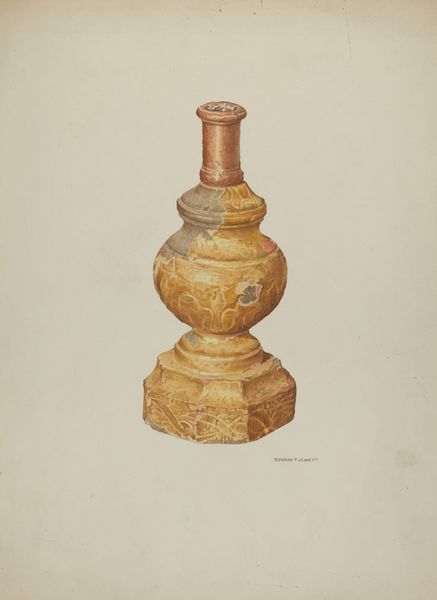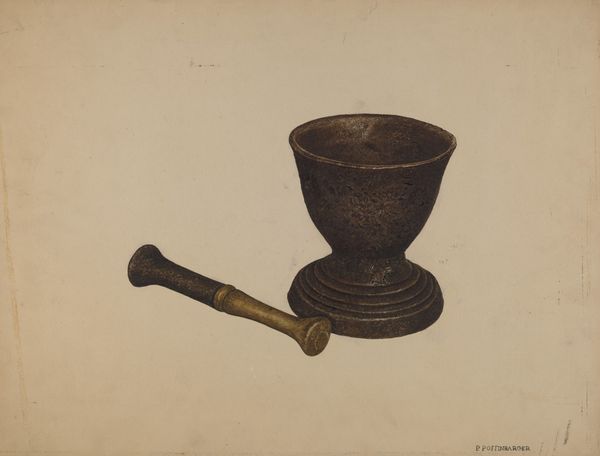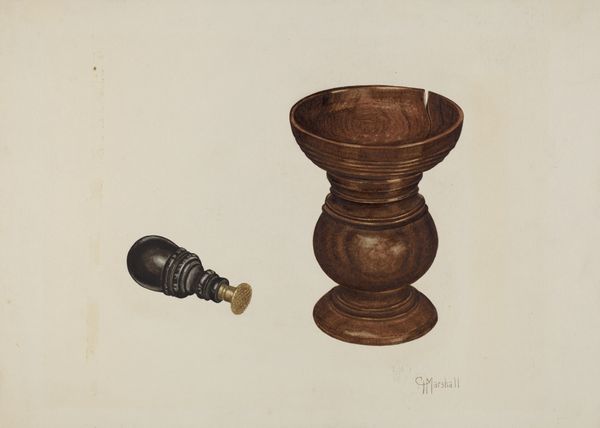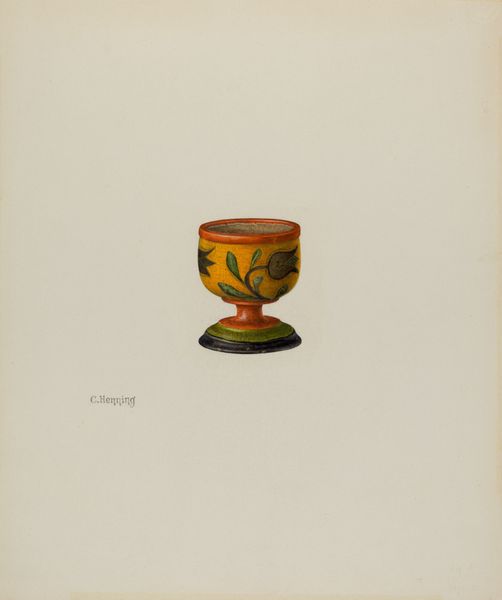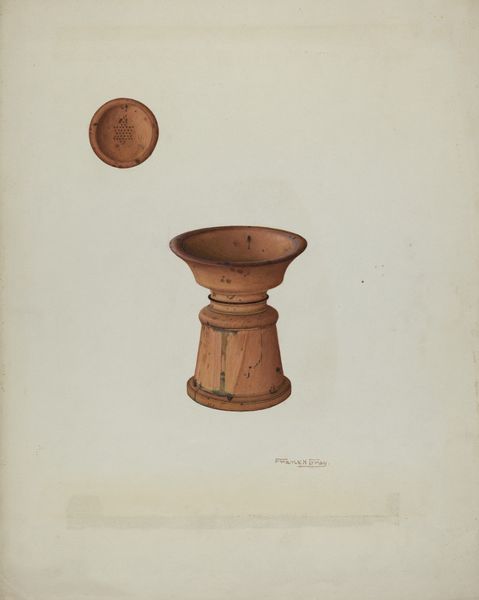
drawing, pencil
#
drawing
#
pencil drawing
#
pencil
#
realism
Dimensions: overall: 25.6 x 35.3 cm (10 1/16 x 13 7/8 in.) Original IAD Object: 2 5/8" high; 2 7/8" in diameter
Copyright: National Gallery of Art: CC0 1.0
Curator: The almost sepia tones lend such a calming presence. Before delving into the object itself, what is your initial response to M. Louise Kent’s “Sand Shaker”, a pencil drawing created around 1938? Editor: It does evoke a sense of serenity, but also one of utility, a kind of quiet strength. I wonder, though, what “utility” meant in 1938 America? Curator: Absolutely. We can examine the image, and how Kent chose to represent the domestic sphere and folk craft objects during a time of immense social and economic change. The stark simplicity and attention to detail certainly speaks volumes about artistic responses during the Great Depression. Editor: I’m interested in the cultural politics of display. Who was this image meant for? Why isolate this common tool as worthy of artistic consideration? Did this kind of display raise the social standing of the maker, or objectify a functional aspect of indigenous culture? Curator: These are key considerations. I see a desire to enshrine everyday, traditional objects in visual culture and reflect that period in time. Kent uses pencil, embracing accessibility. It’s a democratic gesture mirroring the cultural memory associated with items essential to daily life. Editor: Do we know the social class or position of the subjects using this object? How does class affect its utility and artistic perception? Is Kent an objective observer or someone subtly encoding her class position? The perspective seems very egalitarian, lacking pretension or high artistry. Curator: What is interesting too is to observe its design. This ‘Sand Shaker’, elevated yet unembellished. How can that minimalism resonate so loudly? Consider for instance how this compares with, say, contemporary product design from that era. Editor: In the grander narrative, these drawings speak of more than objects; they echo labor and tradition, inviting viewers to reconsider value beyond commercial worth. This connects to conversations about labor, and economic structures. Curator: Precisely, these pieces provide intimate reflections into the intersection between functionalism, representation and power, echoing even today's debates around authenticity and appropriation. What better approach, though, than to leave our visitor the space to consider, further, these insights? Editor: Indeed. And hopefully they will be just as keen as us to trace how the artwork of past times informs our ever-evolving societal concerns and how they still mirror themselves, today, into our current perceptions of them.
Comments
No comments
Be the first to comment and join the conversation on the ultimate creative platform.
